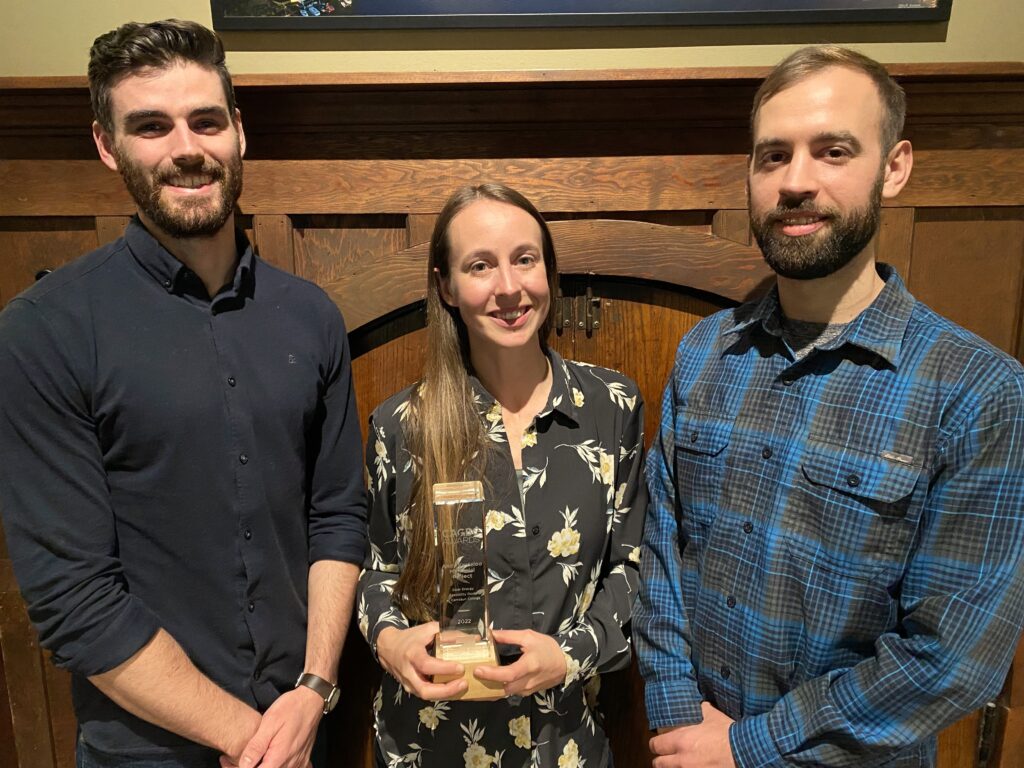A discussion with the winning team of the 2022 Andy Kesteloo Award
- Theme
- CAGBC Awards
- Member Profiles
The Andy Kesteloo Memorial Project Award is presented in memory of Andy Kesteloo, a visionary green building advocate who shared his commitment for a sustainable earth with humour, insight and passion. The 2022 winner of this award is the Solar Energy Feasibility Study at Camosun College, a study that mapped the solar potential of Camosun’s Lansdowne and Interurban campuses’ rooftops and parking lot areas, undertook in-depth case studies of other large-scale solar projects in the region, and provided supporting information for a grant application to act upon the study’s findings. We recently interviewed the winning group’s representative, Amanda Garner, to understand the significance of this study for her team and the lessons learned.
Tell us about your team’s collective involvement in the green building industry and what drove you to pursue an education in the field.
As millennials, we grew up with an ever-increasing concern for the state of the world and the environment. This resulted in a desire to be part of the solution to a changing climate and why we enrolled for the environmental technology program at Camosun College. The environmental technology program was the backbone of our involvement in the green building industry with courses teaching us how our built environment affects our daily lives and future. Green building will help humanity live with nature in a way that is much more sustainable and help ensure that ecological value is preserved for future generations.

Tell us about the inspiration behind the Solar Feasibility Study at Camosun College.
Inspiration for this project was derived from cooperative work-terms, coursework, and an interest in renewable energy. Further, the project group was motivated to increase sustainability at Camosun College. As a result, we believed that determining the potential of solar energy on rooftops and parking lots would have a lasting impact on sustainability decision-making at Camosun College.
What is your team most proud of from your involvement in the project?
Our team is most proud of the lasting impact our project will have on Camosun students and the local community. The feasibility report we created will help inform Camosun’s leadership and the solar library project funding that we helped apply for will be inspirational for students while helping educate the community on how to tackle large-scale solar projects. We believe that this will impact future generations of students and lead the way for more renewable energy projects in our community.
What is one key lesson your team learned in completing the project that you want others to know?
One key lesson that our team learned while completing the case study section of our project was the importance of being creative to fund large-scale solar energy projects. For example, a TRU professor suggested co-funding opportunities with alumni and the local community. The resulting savings in energy consumption from energy suppliers and any proceeds from selling electricity could be paid back to funders or used to create bursaries for students. Additionally, an institution we interviewed indicated that a portion of parking fees are allocated to funding sustainability projects on campus. We found these creative funding options to be inspirational and really showed us how solar projects can combat a changing climate and build the wellbeing of local community members.
How do you think we can encourage more young people to get involved in the green building industry?
We think that more young people will become involved with the green building industry if we are able to communicate the benefits through education and examples such as large-scale solar energy projects. If young people understand that green building will help combat a changing climate and mitigate challenges such as energy volatility, then they will be excited to be involved, as green building will directly impact their present and future. For example, a building that is well insulated and equipped with renewable energy production will allow its inhabitants to have lower energy needs while not being subject to increasing market energy costs. This will improve housing affordability and confidence in young people that tangible steps are being taken to meet the challenges of our changing climate.